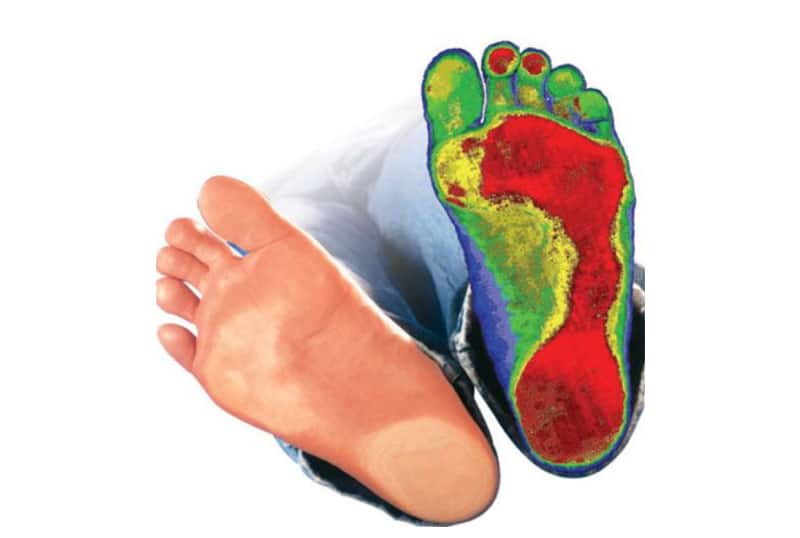If you’re a chiropractor that treats sports or accident injuries, inflammatory joint diseases, or any other conditions affecting the hip, knee, ankle or foot, then you most likely write prescriptions for lower limb orthoses. And as with any other service, provider compliance is crucial for avoiding denials and getting paid.
Based on information available from the Centers for Medicare & Medicaid Services (CMS), we’ve put together a guide for ordering lower limb orthoses that details denial prevention and includes codes that are covered by Medicare. For more information, visit the CMS website.
Lower Limb Orthoses: The Basics
A lower limb orthosis is described as an external force system used to compensate or control for decreased or abnormal forces in the hip, knee, ankle, or foot. Orthoses are used for a wide range of purposes, like lending stability to weak joints, controlling motion in the presence of abnormal tone, and protecting inflamed joints.
The Medicare Fee-For-Service improper payment rate for lower limb orthoses has been estimated at 66.7 percent, representing an improper payment amount of $319.6 million. Lower limb orthotics are “… covered under Part B when furnished incident to physicians’ services or on a physician’s order … (and) are used for the purpose of supporting a weak or deformed body member or restricting or eliminating motion in a diseased or injured part of the body.”
Top Reasons for Denials
For the 2017 reporting period, insufficient documentation errors accounted for 92.2 percent of improper payments for lower limb orthoses. Additional types of errors included no documentation (2.1 percent), medical necessity (1.5 percent), and other (4.2 percent) for this service.
Tips for Denial Prevention
Medicare covers ankle-foot orthoses not used during ambulation described by codes L4396 or L4397 if you met either all of criteria 1-4 or criterion 5:
- Plantar flexion contracture of the ankle (see ICD-10 Codes That Support Medical Necessity, Group 1 Paragraph page 9 LCD L33686) with dorsiflexion on passive range of motion testing of at least 10 degrees (for example, a non-fixed contracture)
- Reasonable expectation of the ability to correct the contracture
- Contracture interferes or expected to interfere significantly with the beneficiary’s functional abilities
- Used as a component of a therapy program, which includes active stretching of the involved muscles and/or tendons
- The beneficiary has plantar fasciitis
Medicare covers ankle-foot orthoses used during ambulation described by codes L1900, L1902-L1990, L2106-L2116, L4350, L4360, L4361, L4386, L4387, and L4631 for ambulatory beneficiaries with weakness or deformity of the foot and ankle, who:
- Require stabilization for medical reasons
- Have the potential to benefit functionally
The supplier must include on the claim line the diagnosis code(s) for HCPCS codes L4396, L4397, L4392 and L4631. For a custom-fabricated orthosis, there must be documentation in the supplier’s records to support the medical necessity of that type of device rather than a prefabricated orthosis. This information must be available upon request.
When providing these items, suppliers must:
- Provide the product that is specified by the ordering physician
- Be sure that the ordering physician’s medical record justifies the need for the type of product (that is, prefabricated versus custom fabricated)
- Only bill for the HCPCS code that accurately reflects both the type of orthosis and the appropriate level of fitting
- Have detailed documentation in the supplier’s record that justifies the code selected
For prefabricated orthoses (L1902, L1906, L1910, L1930, L1932, L1951, L1971, L2035, L2112-L2116, L2132-L2136, L4350, L4360, L4361, L4370, L4386, L4387 and L4396-L4398), there is no physical difference between orthoses coded as custom fitted versus those coded as off-the-shelf.
The differentiating factor for proper coding is the need for “minimal self-adjustment” at the time of fitting by the beneficiary, caretaker for the beneficiary, or supplier.
- This minimal self-adjustment does not require the services of a certified orthotist or an individual who has specialized training.
- Code items requiring minimal self-adjustment as off-the-shelf orthoses. For example, adjustment of straps and closures, bending or trimming for final fit or comfort (not all-inclusive) fall into this category.
For more information about this topic, see:

